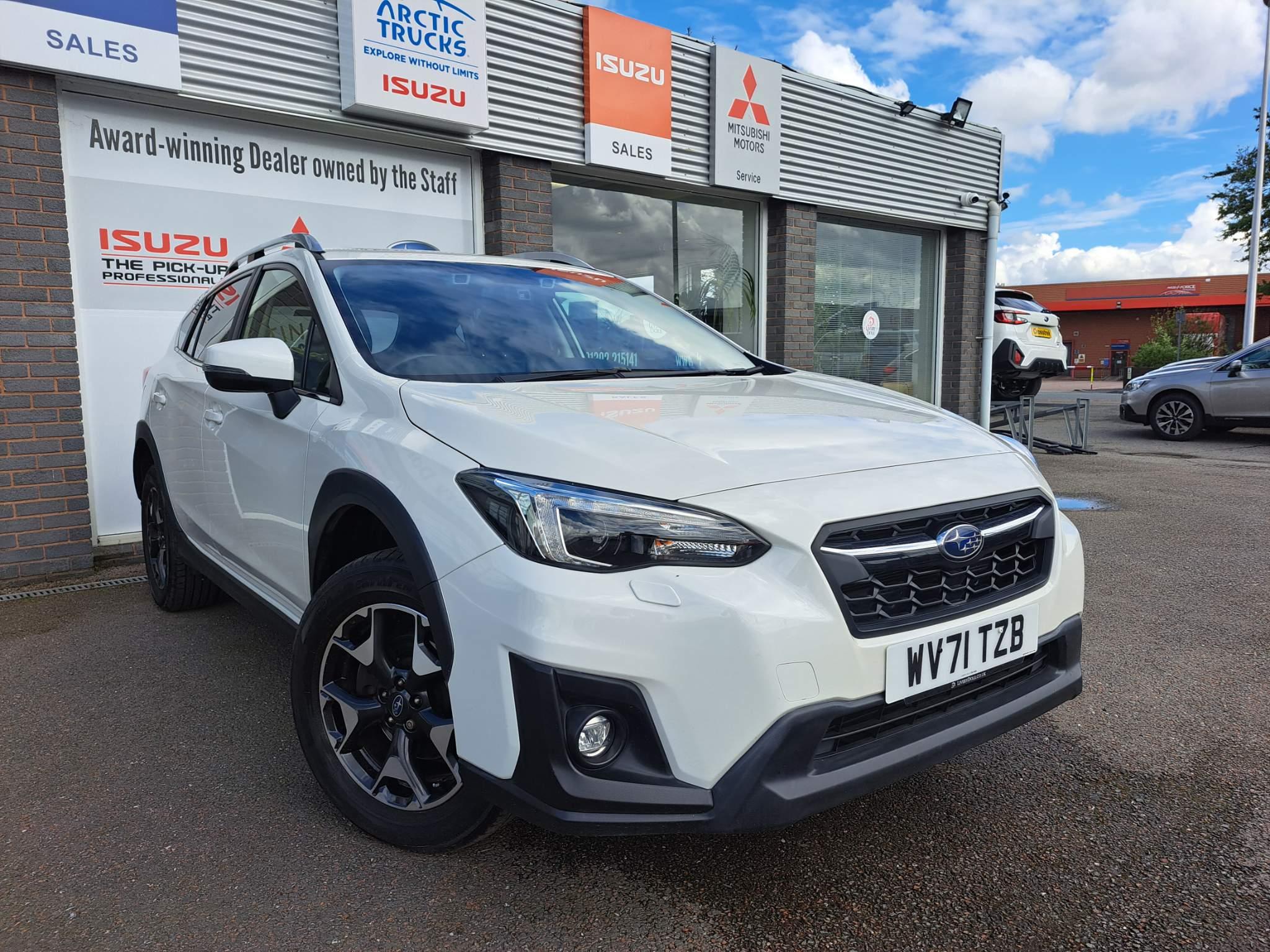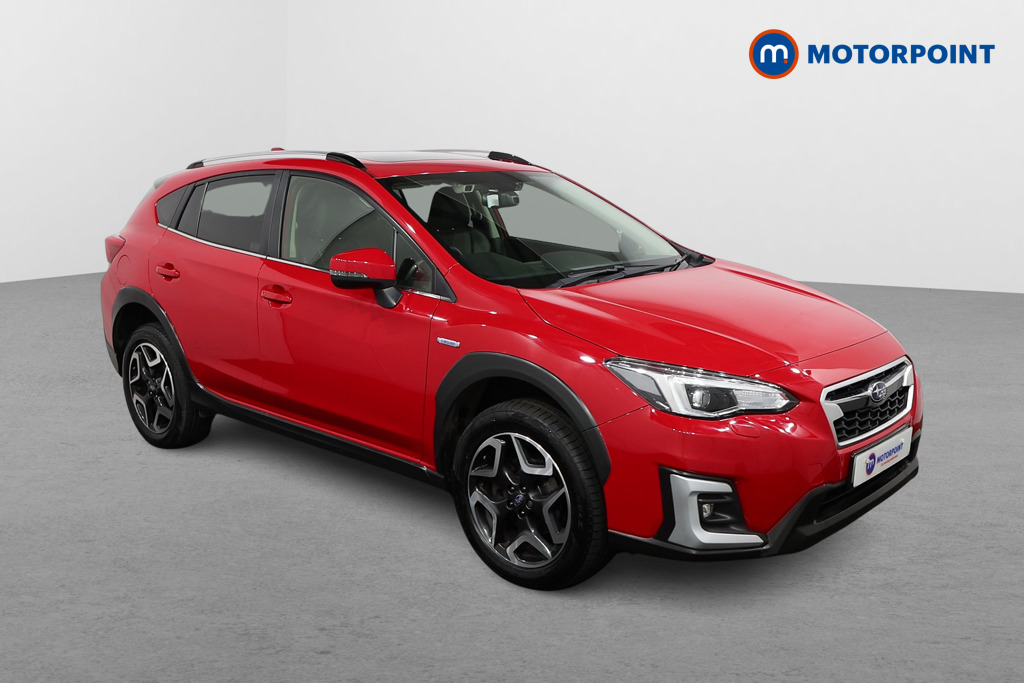Used Subaru XV for sale: everything you need to know
The Subaru XV is a left-field choice of family hatchback. It’s always been relatively pricey, never been particularly fuel-efficient, it isn’t especially quick (some variants are outright sluggish), and while it’s decent to drive, any number of rivals are more fun and more engaging.
But with standard all-wheel drive and raised ground clearance, it does have a niche market among those for whom a regular hatchback just isn’t capable enough when the going gets tough. Subaru’s audience might not be huge in the UK, but it knows its buyers well - and as a used buy, the XV makes some sense if you need all-wheel drive but don’t wish to buy a larger SUV.
There aren’t many like-for-like alternatives to the XV, though all-wheel drive versions of the Audi A3, BMW 1 Series and Mercedes-Benz A-Class may fit your needs, and if SUVs are an option, the Audi Q3 and Volvo XC40 are options, as well as Subaru’s own Forester.
Should you buy a Subaru XV?
If all you need is a family hatchback, the Subaru XV is a tough car to recommend, as even used, you’re paying extra for features you might not get much use out of, and lumbering yourself with higher running costs than most equivalent models, in part thanks to the lack of a diesel engine.
You won’t find a manual gearbox in any used XVs either, as every engine Subaru has offered has come attached to a continuously variable transmission, or CVT automatic. These can be an acquired taste, though to Subaru’s credit, its ‘Lineartronic’ CVT is better to use than most. It’s at its best in the 2-litre and e-Boxer models though - we’d suggest steering well clear of the 1.6, which has pretty sluggish performance and spends a lot more time at higher revs thanks to that CVT.
Hybrid power is definitely the best way to experience the XV, and the most frugal too. But all XVs handle well - they’re not as sharp as a Ford Focus to drive, but they’re agile, have fantastic traction even in poor weather thanks to Subaru’s AWD setup (which also works brilliantly on slippery surfaces like grass or snow), and feel solid and confidence-inspiring.
That solidity also applies to the XV’s safety. The XV has had a healthy list of safety features and electronic aids from day one, and Subaru as a brand has a good reputation for making tough cars too. The interior design is a little messy but it’s built well, comfortable, and spacious - relatively small boot aside.
If you don’t need a car so biased towards poor weather and bad road surfaces then a regular hatchback like a Ford Focus or Volkswagen Golf probably makes more sense than the XV, but if you do want AWD, your family hatch choices are a lot more limited: you’re mostly looking at either crossovers and SUVs which don’t drive as well as the Subaru, or premium models like Quattro, XDrive and 4Matic versions of the Audi A3, BMW 1 Series, and Mercedes-Benz A-Class.
A Subaru XV not for you? We've got 1000s of used cars for sale to suit all budgets and needs
What’s the best used Subaru XV model to buy?
The 2.0i e-Boxer is the XV to go for if it’s in budget. While it doesn’t have the highest economy on paper, that’s partly because the older non-hybrid 2-litre’s fuel economy was measured on the less real-world relevant NEDC scale. In reality, the e-Boxer is more frugal than the underpowered 1.6, and has much better acceleration. As a conventional hybrid rather than a plug-in, it’s an ideal choice for anyone who isn’t yet ready to move to plug-in vehicles too.
With specification, SE trim should be all most buyers need, being very well equipped as standard. The electric seat adjustment, sunroof and leather seats of the SE Premium are nice to have, but not essential and not worth blowing your used car budget for.
Used Subaru XV fuel economy and performance
- Subaru XV 1.6i: The 1.6-litre four-cylinder ‘boxer’ engine in the XV made 114PS and came with a CVT automatic and all-wheel drive as standard. 0-62mph took 13.9 seconds and combined economy was 35.3mpg.
- Subaru XV 2.0i: With a larger 2-litre boxer engine and 156PS (still with a CVT and all-wheel drive), the XV got from 0-62mph in 10.4 seconds. Economy was measured on the less accurate NEDC standard, and quoted at 40.9mpg.
- Subaru XV 2.0i e-Boxer: More recently only the e-Boxer version of the 2-litre has been available. This hybrid-assisted model makes 150PS, has a CVT and AWD, and covers the 0-62mph run in 10.7 seconds. Combined economy is 35.7mpg.
What used Subaru XV trim levels are available?
There are only two trim levels on the Subaru XV, SE and SE Premium, and they’ve stayed that way for most of the model’s time on sale. Actual equipment levels have changed slightly over time, as Subaru has upgraded the SV to keep it competitive with the rest of the market, but you’ll naturally get higher levels of kit in the SE Premium for a given year or with a given engine. Below we’ve listed equipment available in the XV’s most recent iteration. Notably, in later hybrid models, under-floor boot storage disappears from the spec list.
- The Subaru XV SE gets 18-inch alloy wheels (17-inch wheels were standard on the 1.6), automatic LED headlights, roof rails, fabric seats, a leather-wrapped steering wheel, six-way driver and four-way manual passenger seat adjustment, heated front seats, keyless entry and start, dual-zone climate control, heated door mirrors, an 8-inch infotainment touchscreen with Apple CarPlay and Android Auto, and Subaru’s ‘EyeSight’ safety systems.
- The Subaru XV SE Premium has all the equipment of the SE, plus a power sliding sunroof, leather seats, eight-way power driver seat adjustment, and satellite navigation.
Used Subaru XV dimensions and boot size
The Subaru XV’s dimensions are:
- Length: 4465mm
- Width: 1800mm (without mirrors)
- Height: 1615mm
The Subaru XV’s boot size is:
- 340 litres (385 litres non-hybrid)
- 1173 litres with the rear seats folded (to roof)
Used Subaru XV road tax
The generation of XV we’re covering here debuted after the UK’s Vehicle Excise Duty system changed, so a flat rate of tax applies to all models. For the 1.6 and 2.0, that means a £180 yearly bill, while the hybrid e-Boxer is a tenner cheaper, at £170.
How much is it to insure a Subaru XV?
The 1.6-litre XV starts in insurance group 10, which is quite affordable and a testament to Subaru’s safety kit - for comparison, the most basic Ford Focus starts only a little lower, in group 8. The more powerful and expensive e-Boxer still only goes as high as group 16, and is lower than the group 20 at which the Subaru Forester begins.
Read our full Subaru XV review


